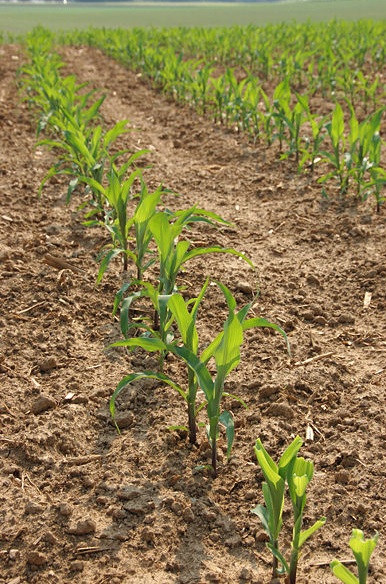
News
More phosphorus recommended for continuous corn, research shows
March 16, 2009 by University of Nebraska – Lincoln
 March 13, 2009, Lincoln, Neb. — As Nebraska farmers are making
March 13, 2009, Lincoln, Neb. — As Nebraska farmers are making
decisions for this year’s growing season, University of
Nebraska-Lincoln research shows applying additional phosphorus is
beneficial for high-yielding, irrigated fields planted to continuous
corn.
March 13, 2009, Lincoln, Neb. — As Nebraska farmers are making decisions for this year’s growing season, University of Nebraska-Lincoln research shows applying additional phosphorus is beneficial for high-yielding, irrigated fields planted to continuous corn.
 UNL soil scientists conducted 34 irrigated corn trials across the state. Researchers found in areas where high-yielding, irrigated fields are planted to continuous corn current UNL phosphorus recommendations need revision, said Charles Wortmann, UNL nutrient management specialist in the Institute of Agriculture and Natural Resources.
UNL soil scientists conducted 34 irrigated corn trials across the state. Researchers found in areas where high-yielding, irrigated fields are planted to continuous corn current UNL phosphorus recommendations need revision, said Charles Wortmann, UNL nutrient management specialist in the Institute of Agriculture and Natural Resources.
Current UNL recommendations do not recommend adding phosphorus to corn when soil tests for phosphorus are greater than 15 parts per million. Research recommendations are based on using the Bray-1 soil test.
However, current research updates that figure and now recommends applying phosphorus up to at least 20 parts per million for continuous corn, Wortmann said.
This revision does not apply to corn that is planted following soybeans. The current recommendation still does not recommend phosphorus above 15 parts per million for corn after soybeans.
These research findings will be published in the May-June issue of the Agronomy Journal.
Nutrient recommendations change as farming practices change, Wortmann said.
“Recommendations have been based on old information when yield levels were much lower than they are now, varieties were different, as were management practices,” he said. “Much more tillage was practiced then. We conducted the 34 irrigated corn trials to find out if those recommendations were still adequate for today's higher yielding conditions.”
When it comes to potassium and sulfur, recommendations did not change.
“Our results validated that potassium recommendations for high-yielding corn stay with the critical level of 125 parts per million, as the probability of profitable response to applied potassium is very low when soil tests are above that,” Wortmann said. “In fact, there is evidence that applying potassium where not needed can have a negative effect on yield.”
The research findings also confirm current recommendations for sulfur.
One way to interpret soil test results is to use software tools to calculate recommendations. UNL has an online soil testing software tool at Soil Test Nebraska.